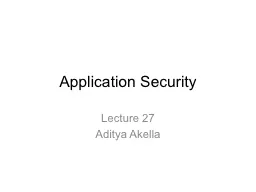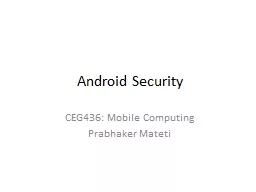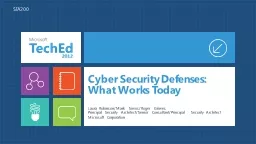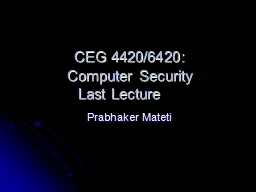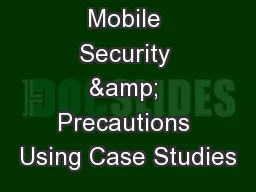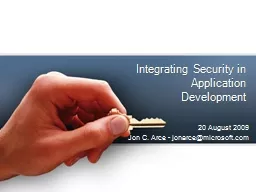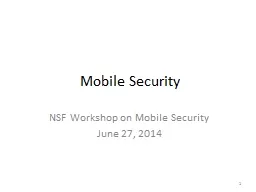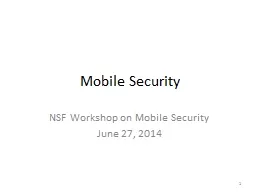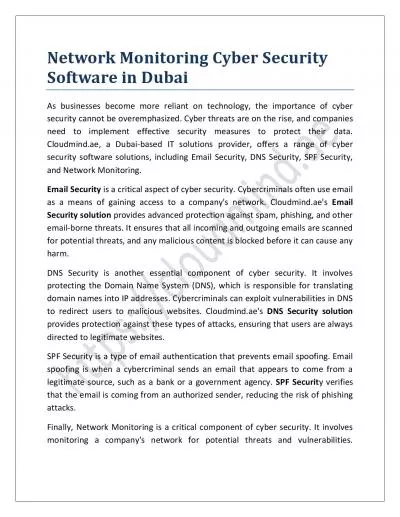PPT-Application Security Lecture 27
Author : celsa-spraggs | Published Date : 2019-03-14
Aditya Akella Why is this important Web Applications are the primary attack target Common approach attack web site steal data abuse it Eg Sony Playstation Network
Presentation Embed Code
Download Presentation
Download Presentation The PPT/PDF document "Application Security Lecture 27" is the property of its rightful owner. Permission is granted to download and print the materials on this website for personal, non-commercial use only, and to display it on your personal computer provided you do not modify the materials and that you retain all copyright notices contained in the materials. By downloading content from our website, you accept the terms of this agreement.
Application Security Lecture 27: Transcript
Download Rules Of Document
"Application Security Lecture 27"The content belongs to its owner. You may download and print it for personal use, without modification, and keep all copyright notices. By downloading, you agree to these terms.
Related Documents

